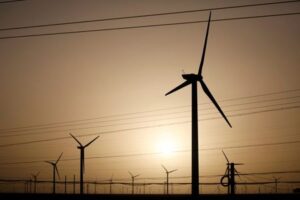By Forrest Crellin
PARIS (Reuters) – Global electricity demand is set to grow at its fastest pace in nearly 20 years this year, spurred by increasing demand for air conditioning as temperatures rise, the International Energy Agency (IEA) said in a report on Friday.
The trend, expected to continue into 2025, will support ongoing use of coal power, even as renewable energy production increases, it predicted.
The increase in air conditioning use is expected to continue as the primary driver of demand growth, following a year of record global temperatures and severe heatwaves pushing grids to maintain a reliable but dirtier baseload supply from sources like coal.
“Growth in global electricity demand this year and next is set to be among the fastest in the past two decades, highlighting the growing role of electricity in our economies as well as the impacts of severe heatwaves,” said Keisuke Sadamori, IEA Director of Energy Markets and Security.
Rising electricity demand from artificial intelligence (AI) is also drawing attention to demand patterns from data centers, raising questions about deployment, demand projections, and energy efficiency, among others, the IEA said.
Global power consumption is expected to grow by around 4% in 2024, which would be the largest growth rate since 2007, with the trend expected to continue at the same pace in 2025, compared to a 2.5% demand increase in 2023, IEA data showed.
India is expected to lead in demand growth over the coming year, up some 8% in 2024 while China is expected to register a 6% growth rate on the year, down 1% from 2023 as the Chinese economy continues to restructure, IEA data showed.
The European Union is expected to rebound from two years of contraction by growing 1.7%, but uncertainty remains around how the pace will continue, while the United States should also bounce back by 3% after declining in 2023 on mild weather.
Renewable energy production is also supposed to rise over the coming years, with the source’s total share of global supply seen at 35% in 2025, up 5% from 2023, which is expected to push solar and wind past hydropower’s share in the global mix.
Total renewable generation is forecast to also overtake coal-fired electricity output in 2025, but the more polluting resource is expected to remain resilient in 2024, adding less than 1% depending on hydropower output, especially in China.
As a result, carbon emissions from the global power sector are plateauing, with slight growth expected this year before falling back in 2025, the IEA said.
(Reporting by Forrest Crellin; editing by David Evans)





